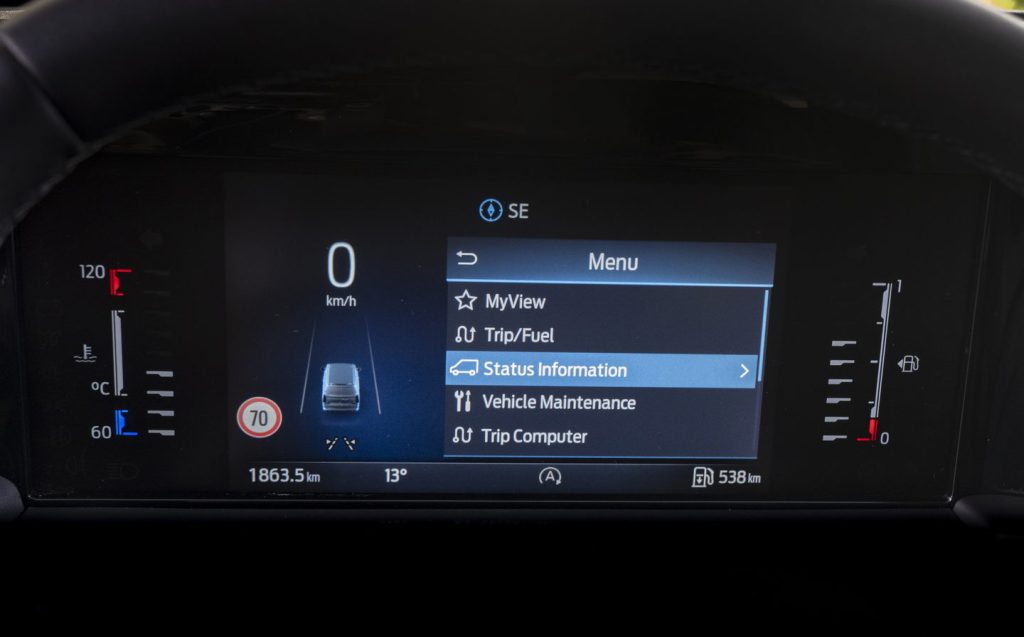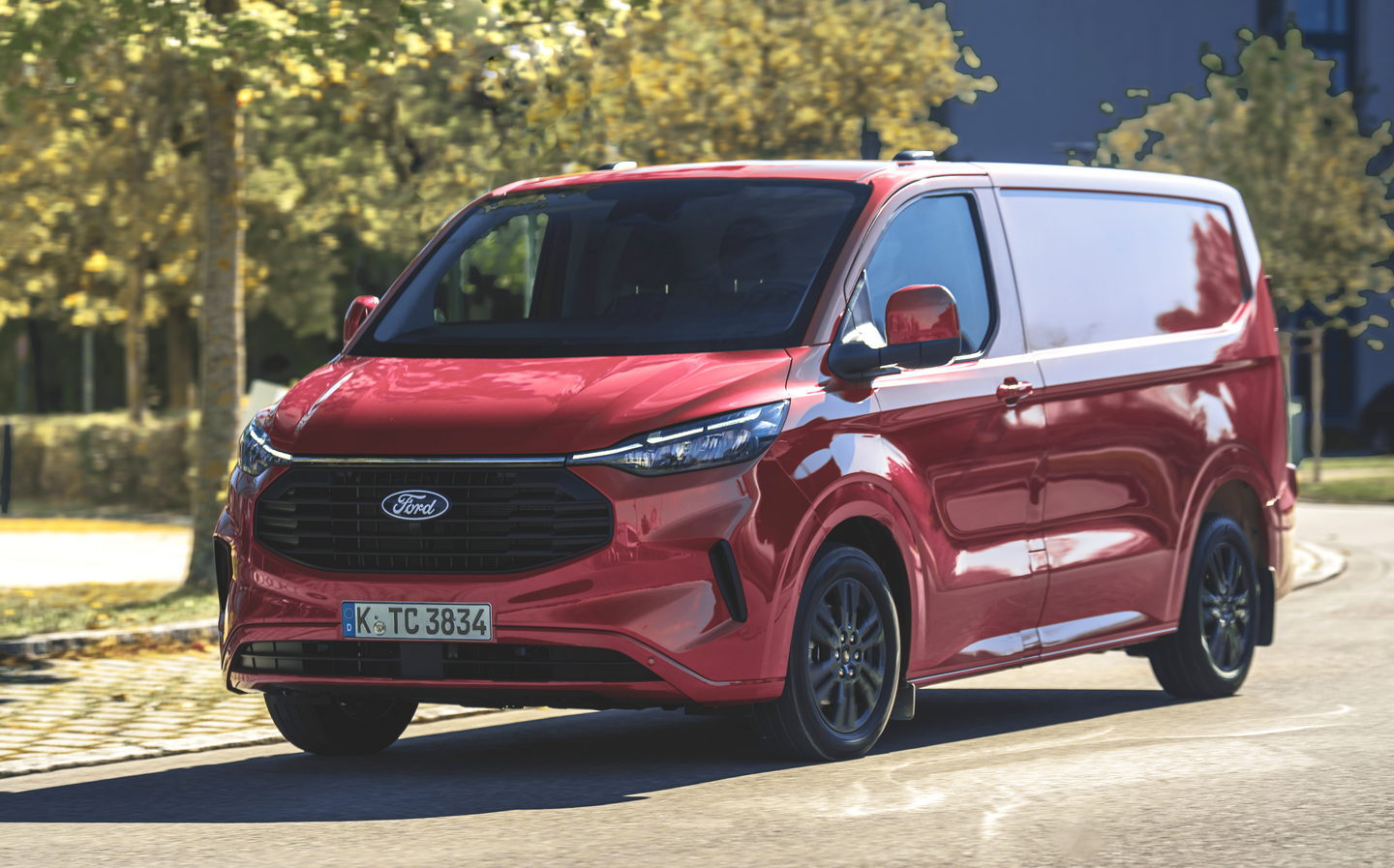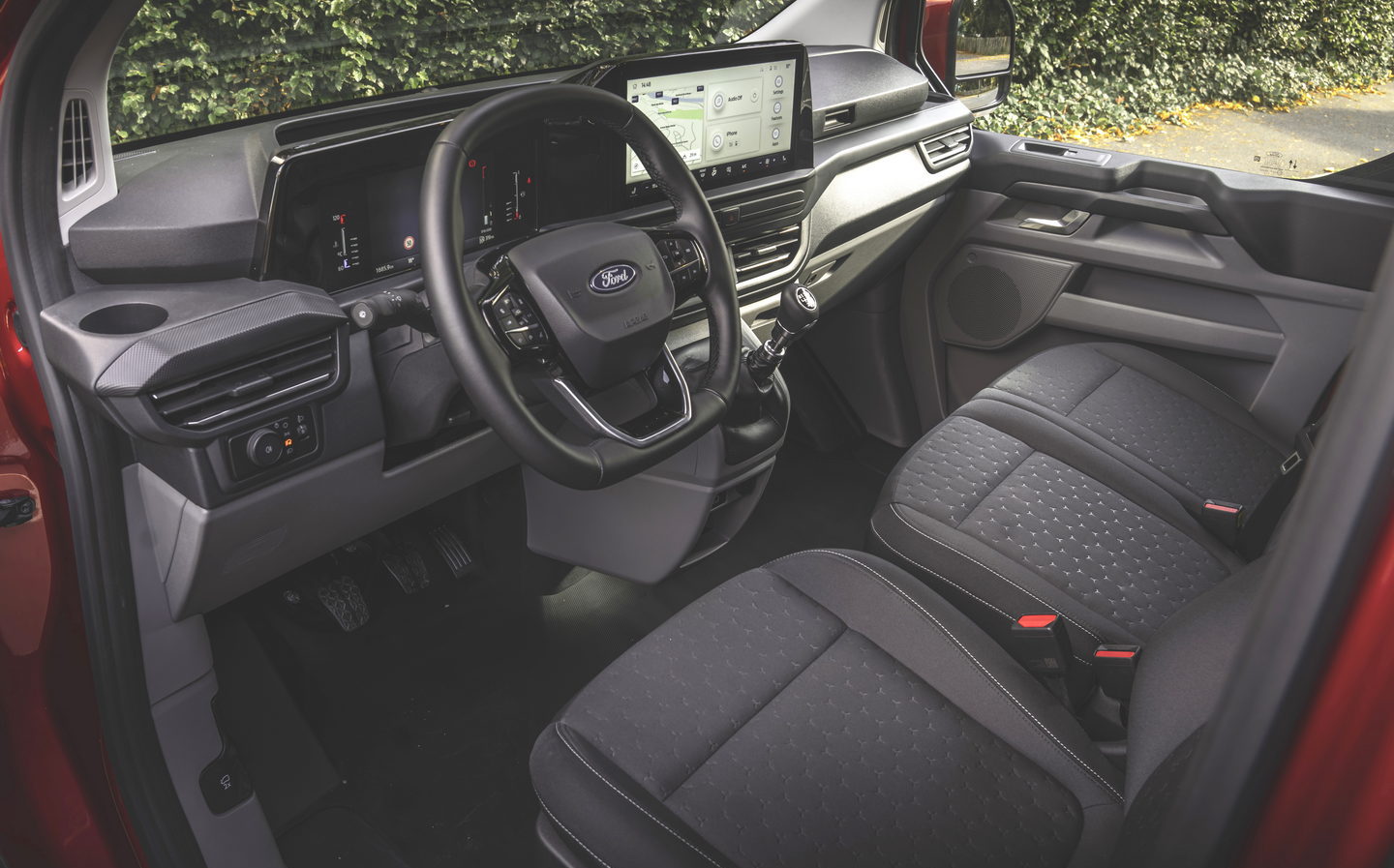Ford Transit Custom 2023 review: Britain's best-selling vehicle gets a thorough makeover
Also available in white
It was assumed that, when Ford gave the Fiesta the bullet, it was giving up its chance of holding onto the UK best-seller trophy. Then, though, the Puma stepped up to the plate and so far in 2023, it has assumed the most popular car in the country mantle.
Either way, it didn’t really matter because Ford always had the best seller on its books, but you have to substitute the word ‘car for ‘vehicle’. In 2022, the Ford Transit Custom, with its 42,765 registrations, left all passenger cars in its dust.
This year, it’s not working out quite so well, at least so far. The Transit Custom is running about 5,000 sales behind the Puma at the time of writing, but then that’s without counting the 21,000 sales of its jumbo-sized Transit sibling, nor the extra 9,000 or so sales of the compact Transit Connect. The Transit, in whatever form you care to choose, remains a massive deal for Ford.

All-new, from the ground up. And shared with Volkswagen
Now, here’s an all-new one. The Ford Transit Custom is what most of us picture when we think of a van, even though it has popular rivals in the Vauxhall Vivaro, Peugeot Expert and Volkswagen Transporter. It comes as a load lugger but also a people carrier, campervan and more besides.
Under the boxy body lies an all-new chassis, which will also be used by the next-generation Transporter. Thanks to an agreement between Ford and Volkswagen to share technology and platforms, the next Transporter will be built alongside the Transit Custom in Ford’s vast Otosan factory in Turkey.
On the outside of the Transit Custom, you’ll spot the sleeker nose, narrower lights (which feature Matrix LED technology on high-end models) and the big grille, which gets a different treatment for the electric model.
Yes, in case you missed it the Transit Custom is going electric. The electric version should start to land in UK dealerships from the summer of 2024, using a battery with a 64kWh capacity, to enable an official range of 208 miles on one charge. It will also, Ford proudly notes, tow a 2.3-tonne trailer load, something that most other EVs won’t. Naturally that’ll dent the range.

Between now and then, Ford will launch diesel-fuelled versions of the new Transit Custom, and a plug-in hybrid using the same 2.5-litre petrol engine and electric motor as the Ford Kuga family SUV. In the Transit Custom it has the potential for a one-charge range of 34 miles.
Both electric and plug-in hybrid versions come with an external power module that can provide 2.3kW to tools or other electrical devices.
The diesel engines are all 2-litre units, mostly powering the front wheels. Buyers can choose from 108bhp, 134bhp and 147bhp front-wheel-drive models with a six-speed manual gearbox, or there are 134bhp and 167bhp versions with an eight-speed automatic, which can also optionally be fitted with four-wheel drive.
More storage and space in the cab

Ford has clearly been doing some deep thinking, as well as listening to its vast customer base when it comes to how the Transit works as a day-to-day work vehicle.
The shift lever for the automatic gearbox now moves to the steering column, for example, making it easier to shuffle across the flat-floored cabin if you need to exit from the passenger-side door. The cab is also filled with storage spaces, including a massive 30 litres on the passenger side thanks to the relocation of the airbag to the roof.
Meanwhile, there’s clever stuff going on in the electronics. There’s a big 13in touchscreen running Ford’s impressive SYNC4 software (same as found in the Mustang Mach-E) which looks good and works nicely.
There’s the option to add on-screen buttons to control the likes of extra external lights for work, or even emergency vehicle sirens, meaning users don’t have to drill holes to mount extra physical switches, making for better residual value further down the line.

Equally, the Transit is fully set up for mobile phone connectivity through the Ford Pass Pro app. This is a free download, allowing control of some basic functions, and which will allow small companies to add as many as five vehicles. If you need more than that, there’s a free Ford Telematics app including basic data, and a paid version that features live fuel or EV battery economy, vehicle tracking and even driver behaviour.

There’s more cleverness if you go for the Mobile Office option. In this, you click a button behind the steering wheel allowing it to be flipped up to a 45 degree or horizontal position, turning it into a laptop stand or, with a small plastic insert clipped-in, a lunch table. Mobile Office also comes with extra cabin lights for working at night, a universal attachment socket and a pop-out bin in the passenger’s door.
Room for 5.8 cubic metres of load
In the back, the basic H1L1 version (that’s the standard roof height with the standard wheelbase) has 5.8 cubic metres of load space and a maximum payload of 1,350kg.
The sliding side door aperture has been carefully positioned so that the van’s cab bulkhead doesn’t intrude on the opening, while the rear doors have been redesigned so that it’s easier to get bulky loads in and out of the back.
For long-wheelbase models, there’s a load-through flap under the front passenger seat, which allows for lengthy loads of up to 3.45 metres to be carried.

There will be more, far more, than mere van variants, too. There will be crew-cab versions with a second row of seats, a Kombi model with up to 14 seats, the posh Tourneo nine-seater and the Nugget campervan. The latter is made with the help of Westphalia, and tries to do things a little differently to its Volkswagen California rival. The kitchen is at the back, the fold-down double-bed is heated, and there are optional solar panels on the roof.
Or, you can have the new Multivan layout. This is a spin on the crew-cab idea, which gives you a four-seat layout (two front, two back) but which leaves space for long loads to be poked through. The idea being that you can bring one van to some sites, rather than two, depending on how many people and how much stuff you need to carry.
There’s more — given the explosion in home delivery shopping, Ford has tailored a Delivery Assist system for the likes of Amazon, DHL and DPD. When it’s active, the system automatically puts the automatic gearbox into Park, activates the hazard lights, turns off the engine, closes the windows and locks all the doors as the driver walks away. When they return, the driver merely has to put their foot on the brake, and everything reverts to how it was before. The idea is that drivers can reduce repetitive strain and save 20 seconds per delivery, which, with a not-unusual 200 drops per day, adds up to an hour saved each working day.

Slick driving experience
Enough theory, what’s the new Transit Custom like to drive? We start with a panel van, fitted with the 147bhp diesel and the six-speed manual gearbox, finished in a fetching shade of blood red. That’s emphasised with the flat, low, pine box lashed to the floor of the load bay. It’s meant to simulate a ‘Europallet’.
The engine is distinctly diesel, but even at a cold idle its noise levels are far from excessive. Ford claims that the Transit’s chassis is some 100kg lighter and 30 per cent stiffer than before, and you can feel that from the first turn of the wheel. Compared to the outgoing Transit Custom, it feels instantly less baggy and more car-like, helped enormously by new independent rear suspension.
The six-speed gearbox shifts with the slick precision that makes you think ‘Ford’ if not necessarily ‘van’, and while the suspension is relatively firm, it’s also well-controlled and pretty smooth.
It probably helps that the roads around Munich — where we were testing the new Transit Custom — are mostly glassy-smooth themselves, but on the few ripples we found, the Transit Custom rode with aplomb. British back roads will present a sterner test.

There’s plenty of torque — 265lb ft of twisting force, to be exact — but it runs out pretty quickly, so while the Transit Custom accelerates briskly up to low-to-medium cruising speeds, it needs a firmer and longer press on the throttle pedal to build up motorway pace.
The new ‘squircle’ steering wheel feels pleasing to hold, and the steering itself is quick, well-geared and allows you to pin the Transit Custom neatly to the apex of a corner. By van standards this is a crisp, enjoyable driving experience, and it’s not bad at all even by car standards.
Speaking of cars, there’s also a 167bhp Tourneo automatic to try. This one has its six rear seats set on rails, so that they can be slid back and forth, and even spun 180 degrees, to give you the rear cabin layout of your dreams. It’s comfortable back there, too, and the vast glass roof lets in lots of welcome light.

Up front, the Tourneo’s expected £51,300 pricetag might make you wince at the hard plastic surfaces of the cabin, but you get the same driving experience as in the van, so it’s more fun than you might expect. A shame that the extra power and torque don’t really make their presence felt much. A quick run up the Autobahn confirmed that the Tourneo runs out of puff at around 95mph, which is about as academic as it gets, but the Tourneo’s stability and comportment at such speeds is impressive.
Slightly less impressive is the tyre roar at regular motorway speeds, and the fact that the front passenger’s seat makes you sit bolt-upright and doesn’t adjust.

Will the new Transit Custom retain its Britain’s best seller slot? There’s no reason why not, and plenty of reasons to think that it might — even though the cost of the basic model has gone up by around £4,000 (arguably compensated for by the extra in-cab tech, and the standard safety equipment). It’s considerably slicker to drive than before, and the cabin looks and feels like it’s better made, and it’s certainly better equipped thanks to its digital-first nature. While the electric and hybrid versions remain unknown quantities for the moment, Ford certainly looks on target to retain its position at the top.
Related articles
- If you found the Ford Transit Custom review interesting, you might want to read about the Ford Ranger getting plug-in hybrid power
- Electric vans will become more important than ever soon, as indicated by Greenwich’s decision on ice-cream vans this summer
- Did you know that Ford competed in this year’s Pikes Peak race in a rather special Transit?
Latest articles
- Scalextric adds Ford Anglia from Harry Potter, John Wick’s Mustang and a gold James Bond DB5
- Best-selling cars 2024: The UK’s most popular models
- New Volkswagen California camper based on car underpinnings and available as a hybrid
- F1 2024 calendar and race reports: What time the next grand prix starts and what happened in the previous rounds
- Sci-fi inspired Ferrari 12Cilindri replaces 812 Superfast, powered by 819bhp unassisted V12 engine (video)
- New Renault Symbioz adds to French carmaker’s fresh crossover SUV assault
- Red Bull confirms Adrian Newey’s departure, but where next for the F1 designer?
- Lotus shows off its work on British Cycling’s Paris Olympics bicycle
- New Aston Martin Vanquish to get V12 engine with 824bhp

































